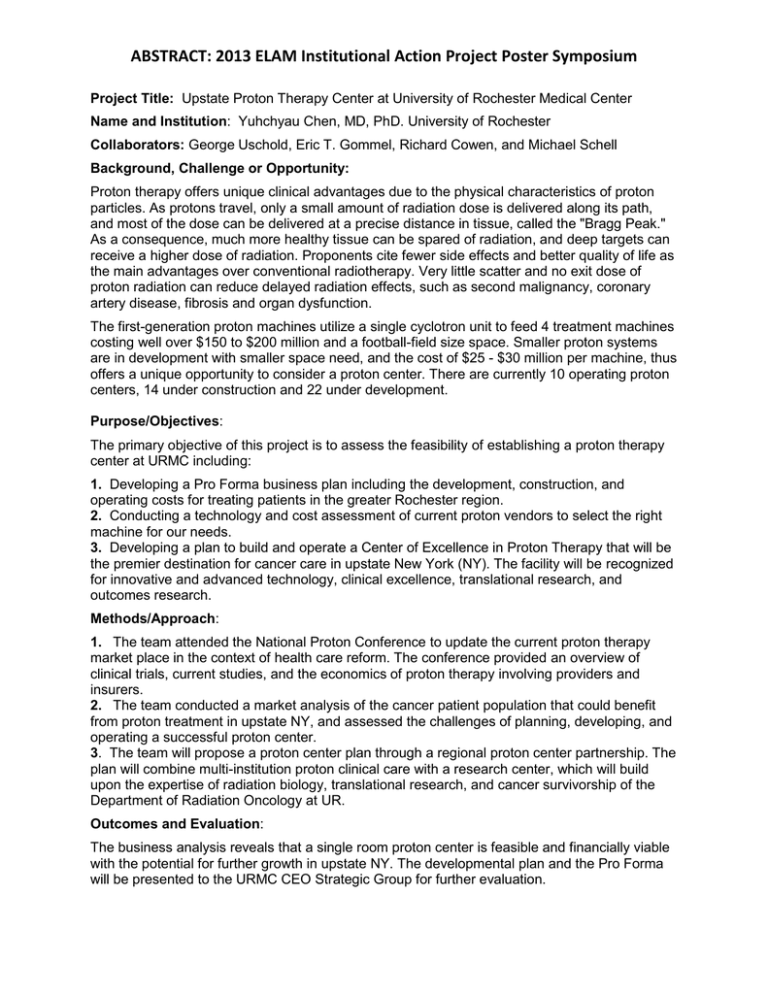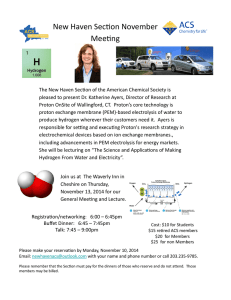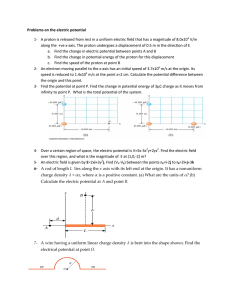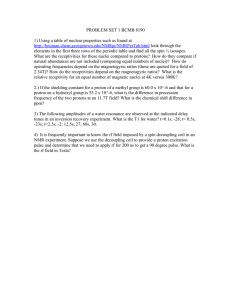ABSTRACT: 2013 ELAM Institutional Action Project Poster Symposium
advertisement

ABSTRACT: 2013 ELAM Institutional Action Project Poster Symposium Project Title: Upstate Proton Therapy Center at University of Rochester Medical Center Name and Institution: Yuhchyau Chen, MD, PhD. University of Rochester Collaborators: George Uschold, Eric T. Gommel, Richard Cowen, and Michael Schell Background, Challenge or Opportunity: Proton therapy offers unique clinical advantages due to the physical characteristics of proton particles. As protons travel, only a small amount of radiation dose is delivered along its path, and most of the dose can be delivered at a precise distance in tissue, called the "Bragg Peak." As a consequence, much more healthy tissue can be spared of radiation, and deep targets can receive a higher dose of radiation. Proponents cite fewer side effects and better quality of life as the main advantages over conventional radiotherapy. Very little scatter and no exit dose of proton radiation can reduce delayed radiation effects, such as second malignancy, coronary artery disease, fibrosis and organ dysfunction. The first-generation proton machines utilize a single cyclotron unit to feed 4 treatment machines costing well over $150 to $200 million and a football-field size space. Smaller proton systems are in development with smaller space need, and the cost of $25 - $30 million per machine, thus offers a unique opportunity to consider a proton center. There are currently 10 operating proton centers, 14 under construction and 22 under development. Purpose/Objectives: The primary objective of this project is to assess the feasibility of establishing a proton therapy center at URMC including: 1. Developing a Pro Forma business plan including the development, construction, and operating costs for treating patients in the greater Rochester region. 2. Conducting a technology and cost assessment of current proton vendors to select the right machine for our needs. 3. Developing a plan to build and operate a Center of Excellence in Proton Therapy that will be the premier destination for cancer care in upstate New York (NY). The facility will be recognized for innovative and advanced technology, clinical excellence, translational research, and outcomes research. Methods/Approach: 1. The team attended the National Proton Conference to update the current proton therapy market place in the context of health care reform. The conference provided an overview of clinical trials, current studies, and the economics of proton therapy involving providers and insurers. 2. The team conducted a market analysis of the cancer patient population that could benefit from proton treatment in upstate NY, and assessed the challenges of planning, developing, and operating a successful proton center. 3. The team will propose a proton center plan through a regional proton center partnership. The plan will combine multi-institution proton clinical care with a research center, which will build upon the expertise of radiation biology, translational research, and cancer survivorship of the Department of Radiation Oncology at UR. Outcomes and Evaluation: The business analysis reveals that a single room proton center is feasible and financially viable with the potential for further growth in upstate NY. The developmental plan and the Pro Forma will be presented to the URMC CEO Strategic Group for further evaluation.







